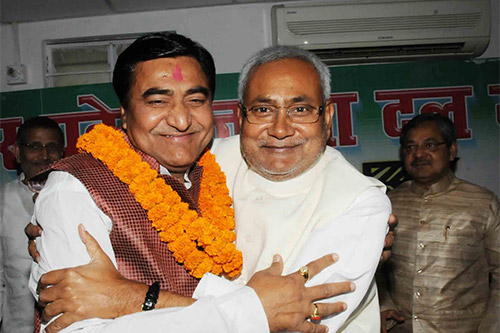Panel calls for standard GST rate of 23-25%
Dated 23rd November, 2015
 India moved a step closer to introducing the goods and services tax (GST), the nation’s biggest tax reform, after a panel proposed that the standard revenue-neutral GST rate could be in the range of 23-25%.
India moved a step closer to introducing the goods and services tax (GST), the nation’s biggest tax reform, after a panel proposed that the standard revenue-neutral GST rate could be in the range of 23-25%.
These calculations, drawn up by the National Institute of Public Finance and Policy (NIPFP), provide an important input into the deliberations of the panel headed by chief economic advisor Arvind Subramanian that is looking into what should be the revenue-neutral rate under GST.
Its recommendations will be placed before the empowered group of state finance ministers. The Subramanian committee’s suggestions are expected to also take into account the government’s political compulsions; it would prefer to avoid high GST rates.
A revenue-neutral rate means no revenue loss to the centre or the states.
This rate could be in the range of 18-19% if there is only a single GST rate, according to the institute’s calculations. However, if goods and services are taxed at different rates as proposed at present, the standard GST rate will be in the range of 23-25%, according to a person familiar with the development who declined to be named.
The lower and upper bounds of both estimates are based on the assumption of a central sales tax rate of 2% and 4%, respectively.
According to the current design of the GST agreed between the centre and the states, goods are likely to be taxed at three different rates—a special rate for precious metals, a lower merit rate for some important goods as well as a standard rate that will be applicable on most goods.
Earlier, in November 2014, a rate of around 27% (state GST at 13.91% and central GST at 12.77%) was considered too high by both the government and industry with finance minister Arun Jaitley reiterating in May this year the government’s intention to bring in a more moderate rate.
The empowered committee of state finance ministers had asked the NIPFP to rework the GST rate last year.
Tax experts underplayed the latest proposal.
“It is still only an NIPFP report, and like the previous time does not arrive at a politically and economically satisfactory number,” said Satya Poddar, partner, tax and regulatory, policy advisory, at consultancy firm EY. “The key will be the recommendations of the Subramanian committee that will soon submit its report.”
“There is a thought process among certain sections that there could be a single GST rate structure provided the tax rate was 12% or below. But for this, exemptions will have to be kept at a minimum, especially in services,” he said.
A GST is expected to remove barriers across states and integrate the country into a common market, thus reducing business costs and boosting government revenue. The indirect tax would replace existing levies such as excise duty, service tax and value-added tax. However, a moderate GST rate is considered key for the successful implementation of GST as an exorbitant rate may encourage tax evasion.
A moderate rate will be politically more acceptable than a revenue-neutral rate. The government had set up a committee in June under Subramanian to arrive at GST rates by factoring in the economic growth rate, tax compliance levels and the GST taxpayer base. This committee is expected to submit its report soon.
The final rate will be decided by the GST council—a representative body of the centre and states that will be set up after the constitutional amendment bill for GST’s passage gets Parliament’s nod. The amendment bill is awaiting the Rajya Sabha’s approval where the ruling alliance is in a minority.
The government had planned to implement the GST from 1 April 2016, but may now be forced to push the rollout to the beginning of any month in 2016-17.
“The standard rate should ideally be around 20%,” said R. Muralidharan, senior director at Deloitte in India, another consultancy. “Most other countries have a GST rate of less than 20% and it is important that India’s GST rate is also around these levels to ensure that we remain competitive.”
The idea of a single GST rate structure was proposed in 2010, but was shelved after opposition from the states, Muralidharan said.
(This report is published in Livemint.com on 23 Nov, 2015)





